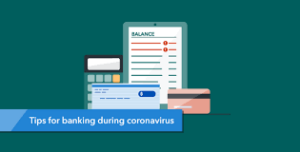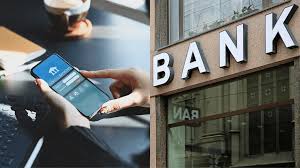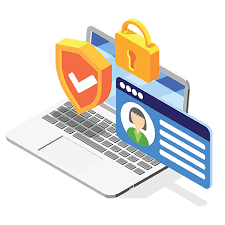In today’s digital age, ensuring the security of your online banking experience is paramount. Banks employ cutting-edge technology to protect your sensitive information. Their approach incorporates multiple layers of advanced security tools designed to safeguard your data from unauthorised access.
At the core of their security strategy lies robust encryption methods. These cryptographic techniques convert your data into a code that can only be deciphered by authorised users. We also implement robust firewalls that act as barriers against potential intrusions.
Computer registration adds another layer of protection, requiring devices to be recognised before accessing accounts. This reduces the risk of account tampering and helps maintain the integrity of your personal information.

Banks will guide you through various options tailored to maximise the protection of your financial data and enhance your overall online banking experience. Your privacy and peace of mind remain our top priority.
When it comes to safeguarding your information, encryption plays a crucial role. It transforms data into a format that is unreadable while it travels between your computer and the bank’s server. At Banks, websites utilise the highest level of encryption available through your browser, specifically 128-bit encryption. This robust protection helps shield your data from identity thieves who might attempt to intercept information during its transmission over the internet or through Wi-Fi networks.
In addition to encryption, banks employ Multi-Factor Authentication to secure your account further. Before you can access any account details, you must be authenticated with a unique Access ID and Password known only to you. This means that no one else can access your accounts without this information. You have the freedom to create a password that ranges from 8 to 14 characters and includes both letters and numbers, as well as special symbols. The system encourages strong passwords—those containing at least one uppercase letter, one lowercase letter, one number, and one unique character—making them exceedingly difficult for identity thieves or hacking software to crack.

You must keep your password confidential; sharing it with anyone—even friends or family—is strongly discouraged. Each member of your household can establish their online banking account with their distinct Access ID and password for added security. Moreover, avoid allowing your browser to store this sensitive information; doing so could put your account at risk if someone else gains access to your computer. By following these guidelines diligently, you help ensure the safety of your online banking experience.
Device Print is a security feature implemented by the Bank’s online banking platform to ensure that users are adequately authenticated before they can access their accounts. When you first log in and register your computer, Device Print gathers various details about your device, including its IP address, CPU model, operating system, and browser version. During subsequent logins, Device Print verifies whether you are using a previously registered device. If it detects an unregistered computer, you will need to complete an authentication challenge to gain access to your banking information.
To facilitate this process, the Bank website installs a cookie on your device. This small file is designed to improve your online banking experience without storing any personal data or passwords. Banks adhere to a stringent Privacy Policy that safeguards your personal information.
Additional security measures are in place for commercial banking customers due to the higher risks associated with transactions like wire transfers and ACH payments. While these measures may cause slight inconveniences for authorised users, they effectively deter potential fraudsters.

Banks issue authentication tokens to individual online banking users as part of their security protocol. These devices generate one-time passcodes that enhance authentication when paired with the user’s unique password—offering robust protection against unauthorised access.
Customers who initiate external funds transfers can opt for Dual Control as an added layer of security for their accounts. With Dual Control activated, each external transaction requires one user to initiate it and another user to approve it before Home Bank processes the transfer of funds out of the account.
Furthermore, Re-Authentication serves as a safeguard against Session Hijacking. Once logged into online banking, users maintain an open session that is protected by these security measures.
Mutual Authentication is a crucial aspect of online banking security. When you log into your banking account, it’s essential not only to verify your own identity but also to confirm that the website you’re using is indeed the legitimate Bank site. To assist with this verification process, our online banking system allows you to choose a unique authentication image and a personal phrase. After entering your Access ID, these selections will be displayed on the login page. Before you proceed to enter your password, take a moment to ensure that both the image and phrase match what you’ve chosen. If this feature is enabled and you access the page without seeing your selected items, it serves as an alert that you need to be added to the genuine Bank’s login site.

This precaution is vital because identity thieves often use tactics such as phishing or compromised routing servers to lead unsuspecting users to counterfeit websites that perfectly mimic legitimate ones. By being able to recognise your online banking environment confidently, you can protect yourself from these deceptive practices.
In addition to mutual authentication, Banks implement various layered security measures that operate behind the scenes. While we keep these strategies confidential to maximise their effectiveness against potential threats, safeguarding your bank accounts and personal information remains our top priority.
When it comes time to share sensitive personal details—like your social security number or account information—with a Bank representative, traditional methods like email or fax may seem convenient but are inherently insecure.

Maxthon
In today’s digital age, safeguarding your online banking information has become more critical than ever, mainly when using a browser like Maxthon. Several proactive measures can ensure that your financial data remains secure.
One of the most fundamental steps is to establish strong passwords for your banking accounts. It’s essential to craft passwords that are not only unique but also intricate. This means incorporating a mix of uppercase and lowercase letters, numbers, and special characters into your password. Steer clear of easily identifiable details such as birthdays or pet names; instead, aim for combinations that are difficult for anyone to guess.

Another vital strategy in bolstering your security is enabling Two-Factor Authentication (2FA), provided that your bank supports it. By activating 2FA, you add a layer of protection to your account. With this feature enabled, every time you log in, you will be prompted to enter a code sent directly to your phone or email. This simple yet effective measure acts as a formidable barrier against unauthorised access.
Moreover, keeping your Maxthon browser updated is key to maintaining optimal security levels. Regularly checking for updates ensures that you are utilizing the latest version of the software, which is often equipped with crucial security patches designed to address newly discovered vulnerabilities.
It’s also wise to regularly clear out your browsing data. This involves deleting items such as browsing history, cache files, and cookies; doing so helps eliminate any sensitive information that could potentially be exploited by hackers if they were able to gain access to your device.
For those who value privacy during their online banking sessions, taking advantage of Maxthon’s privacy mode can prove incredibly beneficial. This feature allows users to navigate the web without retaining any data from previous sessions—including cookies or site-specific information—thereby offering an extra layer of protection while handling financial transactions.
Additionally, consider enhancing the security of your online activities by installing reputable security extensions or tools specifically designed for protecting personal information. These tools can further fortify the defences around your sensitive data as you navigate through various online platforms.
By implementing these strategies diligently while using Maxthon or any other browser for online banking purposes, you can significantly reduce the risks associated with cyber threats and help ensure that your financial details remain protected in this ever-evolving digital landscape.
